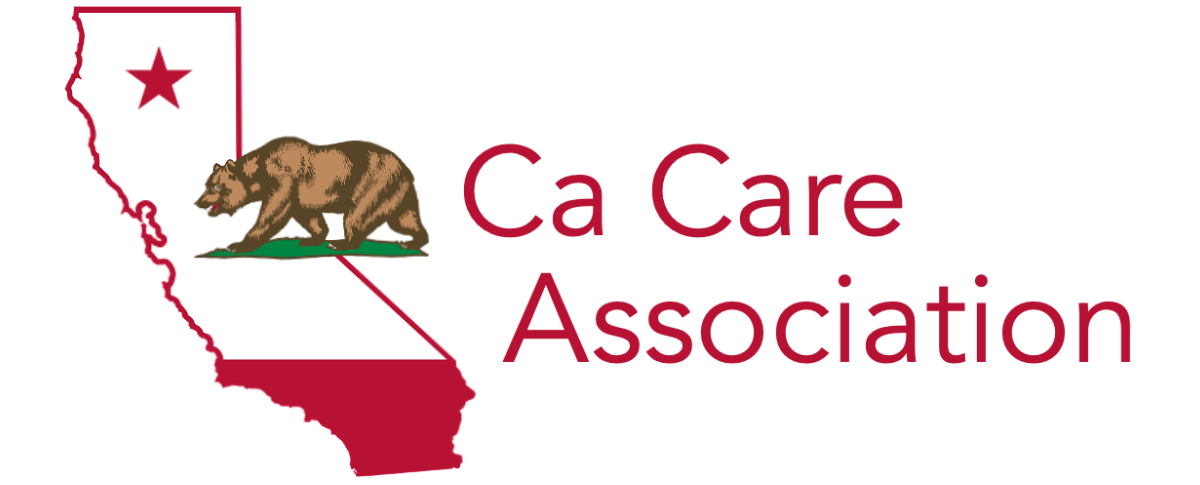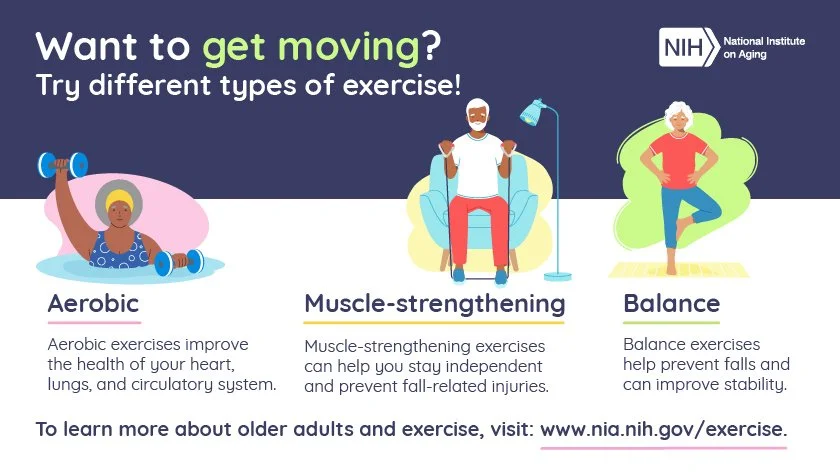Exercise Guide for Older Adults
Muscle function often declines as people age. Older adults may struggle to perform everyday activities they once did and may even lose their independence. Exercising can help older adults prevent age-related decline in their muscle mass. A study revealed that muscle mass is a good predictor of longevity in older adults over the age of 55. There is also a 51% lower risk of death from all causes among older adults, over the age of 40, who do 8,000 steps or more per day.
It is recommended that older adults aged 65 and over be physically active every day. It can be a light activity, such as cleaning or activities that improve balance, flexibility, and strength. Physical activity is important to reduce the time spent lying down or sitting without moving. Older adults should engage in at least 150 minutes of moderate-intensity activity per week, or 75 minutes of vigorous-intensity activity, or a combination of both.
THREE KINDS OF INTENSITY
As reported by the National Health Service UK, the following are the three kinds of intensity to guide older adults in their physical activity.
1. Light Intensity Activity
Light activities can include standing up, making the bed, getting up to do something, cleaning, moving around the house, and walking at a slow pace. It only requires moving your body and doesn’t need to be intense to make you sweat a lot.
2. Moderate Intensity Activity
Moderate activities can include dancing for fitness, riding a bike, hiking, pushing a lawn mower, and walking for health. These activities can make you feel warmer and breathe faster. It is a moderate intensity if you can talk, but not sing, while doing the said activities
3. Vigorous Intensity Activity
Vigorous activities can include martial arts, swimming, football, running, aerobics, riding a bike fast or on hills, and hiking uphill. These activities can make you breathe hard and fast. In comparison to Moderate Intensity Activity, you are not able to talk while doing the activities unless you make a pause to catch your breath. 150 minutes of Moderate Intensity Activity can also have the same benefits with 75 minutes of Vigorous Intensity Activity.
THREE TYPES OF EXERCISES
According to the National Institute on Aging, aerobic, balance, and muscle-strengthening exercises can reduce the risk of injury and boredom. Incorporating these three types of exercise can improve one's physical abilities and health. Regular exercise can give you more energy and prevent certain diseases that are common among older adults, such as diabetes, heart disease, and depression. Moreover, regularly exercising can improve cognitive health, which can reduce the risk of dementia or Alzheimer’s disease.
Consult a healthcare provider or your doctor before starting any of these exercises to know if they are suitable for your health condition. The type of exercise and its intensity should be in accordance with your physical fitness.
1. Aerobic Exercises
Aerobic exercises require the large muscles of the body to be engaged for a prolonged period. It is referred to as cardio or endurance, where the lungs move more air and the heart pumps more blood, and delivers it to the working muscle. Aside from this, it can decrease the risk of diseases which are common among older adults. It is recommended to have at least 150 minutes of moderate-intensity aerobic activity every week.
Moderate-intensity activities may include dancing, swimming, bicycling, yard work, housework, and climbing stairs or hills. Before the exercise, do a light activity to warm up your body. The exercise should not cause chest pain, nausea, or dizziness. Do not forget to drink water when doing exercises that make you sweat and to perform a light activity after the exercise to cool down your body.
2. Balance Exercises
Balancing exercises can help prevent falls and fall-related injuries. It is recommended to have three sessions of balance exercises a week. Balance exercises may include yoga, balance walk, tai chi, walking backwards or sideways, heel to toe walk, and practising standing from a sitting position.
Always remember to listen to your body and go slowly to prevent falling. Go barefoot or wear comfortable footwear to have grip on the floor or mat. For additional safety, you can also have a person, wall, or sturdy chair nearby to hold for support.
3. Muscle-strengthening Exercises
Muscle-strengthening exercises require the muscle to contract and are also called strength training or resistance training. It can improve one’s physical health and maintain a person's ability to perform everyday activities. If you are a beginner, you can do these exercises without resistance bands and weights. To allow muscle recovery in between sessions, avoid working the same muscle group two days in a row in a week.
It can include lifting your body weight, carrying heavy items, using resistance bands or hand-held weights, or weight machines. Before doing this exercise, it is important to warm up and to remember not to hold your breath during strength exercises. Avoid locking your arm and leg joints in a straight position. To prevent sore joints, muscle pain, and exhaustion, do not overdo these exercises. To ensure your safety in doing these kinds of exercises, you can have a personal trainer or join a group class in your gym, recreation center, or senior center.
To be guided in your exercises, you can access videos of exercises for older adults in the youtube account of National Institute on Aging.
Physical fitness is crucial for overall well-being. This is all the more important when a person becomes an older adult where there is an increased risk of certain diseases and health complications. To read more about older adult health, visit the Ca Care Association News and Resources.




